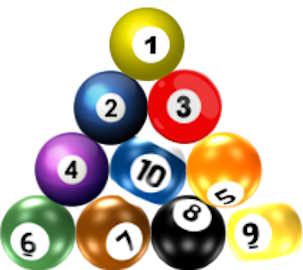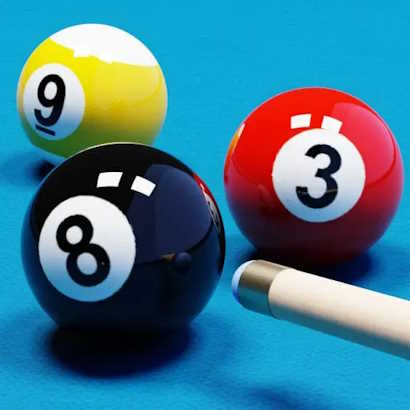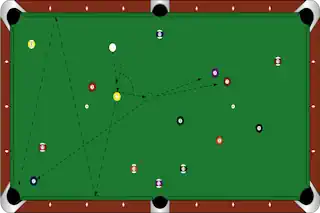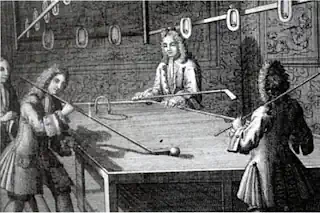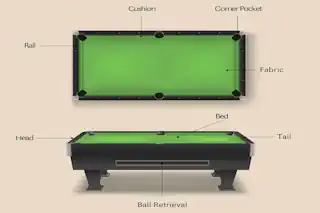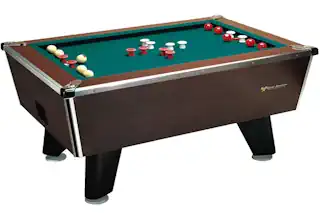Billiards: A Comprehensive Guide
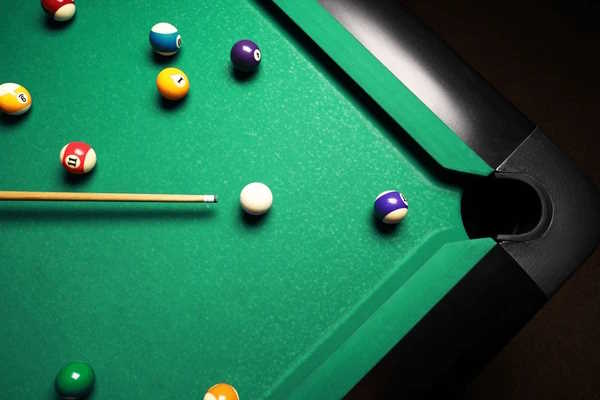
For centuries, billiards has captivated players of all backgrounds, enchanting them with its blend of strategy, skill, and sport. If you’ve ever walked into a dimly-lit bar or a grand game room, you’ve likely been drawn to the resounding clack of balls against each other. But what is billiards, beyond the familiar arc of the cues and the green expanse of the table?
In this comprehensive guide, we’ll break down everything you need to know about the game of billiards, from its intriguing history to the intricacies of play, and even its benefits beyond the tabletop battlefield.
Unveiling Billiards: A Brief Introduction
Billiards is a cue sport that encompasses a variety of games typically played on cloth-covered tables. The game involves using a cue stick to strike billiard balls, moving them around a bounded table with pockets or holes. It’s a game as diverse as the communities that have adopted it, with different countries and cultures imprinting their unique flair onto the game. But what exactly does billiards consist of, and what makes it different from its close relatives, pool and snooker?
The Rich Tapestry of Billiards History
To understand billiards is to grasp a slice of human history, for the game’s origins can be traced back to the 15th century in its earliest form.
Billiards is a game steeped in tradition, which has seen it evolve in numerous ways across the centuries. Its path incorporates the refinement of cues, the engineering of tables, and the breeding of countless variations—each with its own stories and legacies. This section marries history with the art of play, showing the deep cultural threads from which billiards has been woven.
Diving into the Different Types of Billiards
Billiards is not a monolith; it’s a family of games, with each member famous for its distinguishing features, from the size of the balls to the number of pockets. We explore some popular variations, including pool, snooker, and carom—diverging paths that cater to different skill sets and preferences. These games have their own dedicated followings and championship circuits, proving that the world of billiards is as wide and as varied as a constellation of stars.
Most Popular Billiard Games
Billiards is a term often used interchangeably to refer to different cue sports or pool games. Here are some of the most popular pool games that have captured the attention and competitive spirit of players around the world:
- Eight-Ball
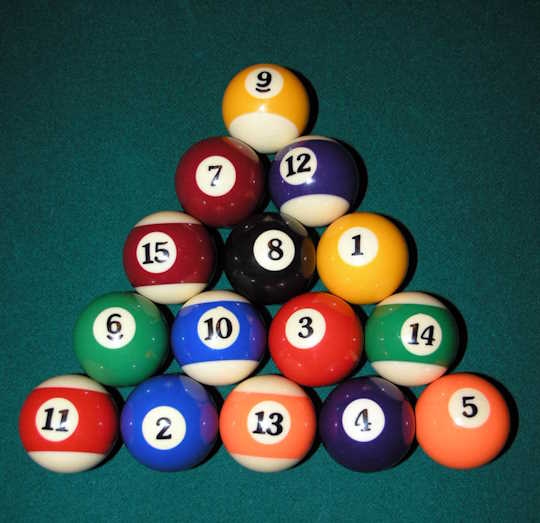
- Eight-ball is perhaps the most recognized variation of pool, played on a table with six pockets. It consists of fifteen balls, with one player aiming to pocket the solid-colored balls numbered 1 through 7, and the other focusing on the stripes, numbered 9 through 15. Sometimes the solid balls are just two colors. Typically red object balls and yellow object balls. The game is won by legally pocketing the 8-ball after clearing your designated group.
- Nine-Ball
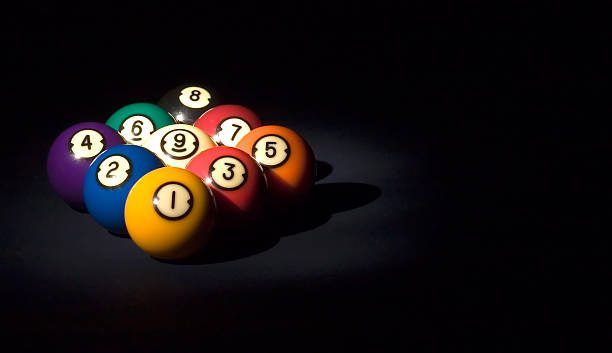
- In nine-ball, the play involves just nine balls numbered from 1 to 9, with players aiming to pocket them in sequential order. The winner is the one who legally pockets the 9-ball after following proper sequence with the other balls.
- Ten-Ball
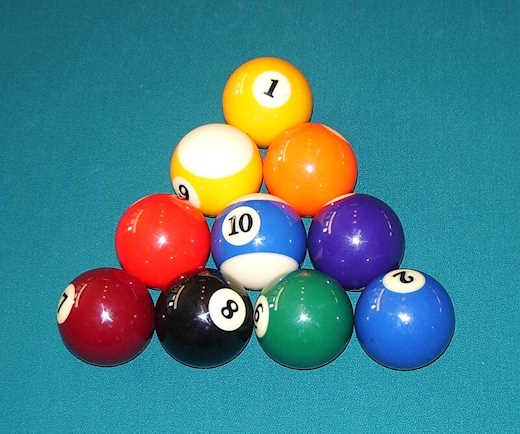
- Ten-ball is a variation that ups the ante from nine-ball, played with ten balls and a cue ball. In this game, players must call their shots, declaring which ball they aim to pocket in which pocket. The sequential order of pocketing from 1 to 10 adds to the game’s complexity, and victory is achieved by pocketing the 10-ball with a called shot, following the proper sequence.
- Snooker
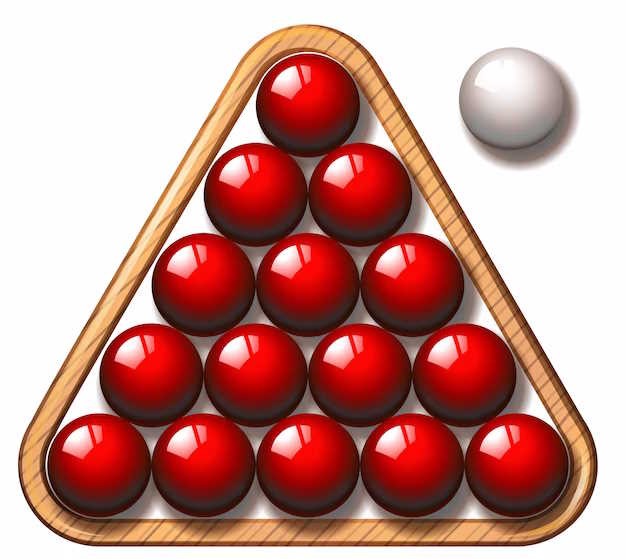
- Snooker is played on a large table often referred to as a snooker table. With 21 balls: fifteen red balls worth one point each, and six balls of different colors with varying point values. Players must strike a red ball with their cue ball and then a colored ball, accumulating points to win the game.
- Straight Pool
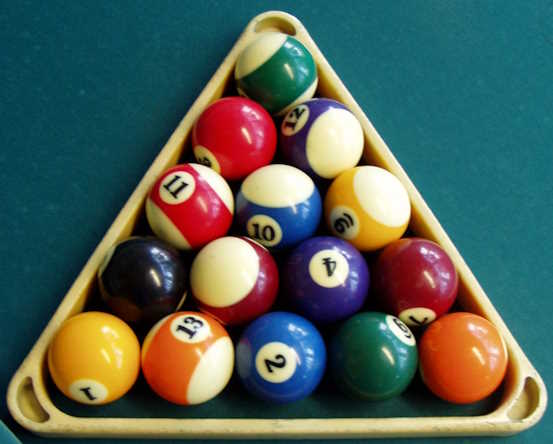
- Straight pool, or 14.1 continuous, is played with fifteen object balls and a cue ball. Players decide on a predetermined number of points needed to win. They can pocket any ball but must call the object ball and the pocket on each shot.
- One-Pocket
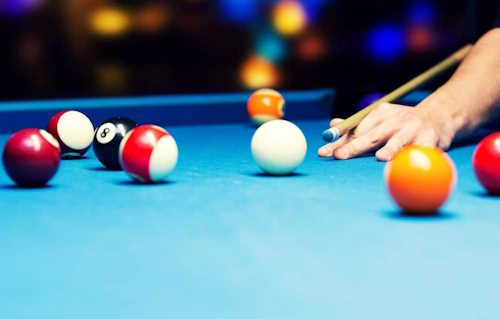
- A strategic pool game where each player is assigned one of the four table pockets to target. The objective is to pocket 8 out of 15 balls into their designated pocket, which requires thoughtful play and precision.
- Bank Pool
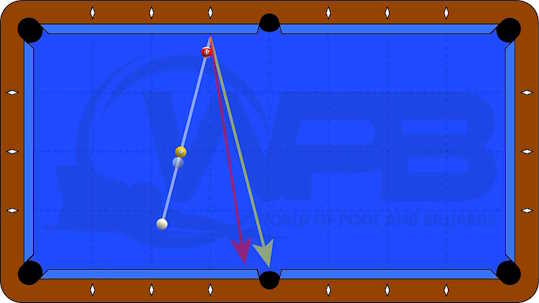
- In bank pool, players must score balls by banking the object ball off the cushion before they are pocketed. Only legally banked balls count toward a win, demanding a high degree of skill and accuracy.
8. Three-Cushion Billiards
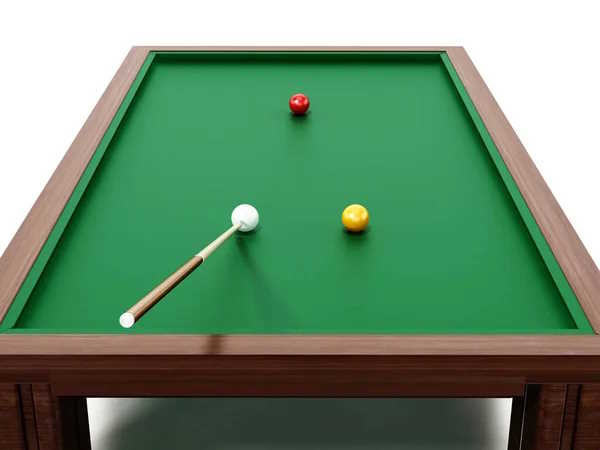
- Three-Cushion Billiards stands out as a challenging and nuanced game within the billiards family. Played on a table without pockets, the goal is for the player to strike the cue ball so that it caroms off both the remaining two object balls and makes contact with the cushions at least three times before the last ball is hit. A game involving only three balls, it’s a test of precision and geometrical calculation, rewarding players who can master the game’s complex physics and strategic foresight.
Essential Billiards Equipment and Its Uses
The game wouldn’t be the same without its specialized tool set. From the polished cues to the resilient tablecloth, billiards equipment is designed with precision and durability in mind. Our guide illuminates the roles of each item, from the core components to the supplementary accessories. We also offer insights into the selection and maintenance of billiards gear, encouraging players to foster a connection that goes beyond the table’s edge.
Typical Billiard Equipment
A billiards enthusiast’s arsenal is incomplete without the proper equipment. Here’s a list of typical billiard gear that is essential for the perfect game setup:
- Billiard Table: The centerpiece of all billiard games, tables come in different sizes and styles, with variations depending on the game played.
- Cue Sticks: Used to strike the balls, a cue stick is a tapered rod made of wood or composite materials, with a tip to help make precise shots.
- Billiard Balls: Sets vary according to the game, but are universally crafted to meet specific size and weight standards for consistent play.
- Cue Ball: The cue ball is struck by the cue stick, typically white and distinct from the rest of the balls in the set.
- Chalk: Applied to the cue tip to increase friction between the tip and the cue ball, minimizing miscues.
- Rack: A frame used to set up the balls at the beginning of a game. The most common are the triangle for eight-ball and the diamond for nine-ball.
- Table Brush: Used to keep the felt clean and free of debris, which ensures a smooth ball roll.
- Bridge Stick: An accessory that provides an extended reach for shots that are too far for the natural span of the player’s arm.
- Table Cover: Protects the table from dust and spills when not in use, helping preserve the quality of the playing surface.
- Ball Tray: For storing balls when they are not on the table, ensuring they are kept in a set and ready for the next game.
Each piece of equipment plays a pivotal role in the art of billiards, from the meticulous care of the table to the strategic application of chalk. With this gear at hand, players are well-equipped to embrace the challenges and joys of the game.
The Role of the Cue Ball in Billiards
The cue ball is the heart of any billiard game, serving as the direct line of communication between the player and the target balls. Unlike other balls on the table, the cue ball is unique in color, typically white, and it is the only ball that players are allowed to strike with the cue stick. Its importance cannot be overstated, as the precision with which it is played dictates the outcome of every shot.
The player’s skill in controlling the cue ball, through spins and angles, is a defining element of their proficiency in the game. Knowing how to manipulate its trajectory, velocity, and interaction with other balls is what separates a beginner from a seasoned player. Mastery over the cue ball’s movement on the felt is both an art and a science, reflecting a player’s strategic acumen and depth of understanding of the game’s physics.
Understanding the Role of the Object Ball in Billiards
The object ball is as crucial to billiards as the cue ball, constituting the primary targets that players strive to maneuver into the pockets. Each game of billiards includes a set of object balls, which differ in number and color, depending on the specific game being played. These balls are at the core of the game’s objective, whether the aim is to pocket them in a sequence, as in games like eight-ball or nine-ball, or to use them in complex caroms, as in three-cushion billiards.
Expert players not only focus on pocketing these balls but also plan several moves ahead, considering how the position of an object ball after a shot can set up their next move or disrupt their opponent’s strategy. Understanding the behavior of object balls upon impact and how they interact with the cue ball and the table’s geometry is integral to mastering the game and executing tactical plays with finesse.
Mastering the Rules of the Game: Billiards Basics
For the uninitiated, the rules of billiards can seem cryptic, a code to be cracked through trial and error. We shed light on the fundamental principles that govern billiards play, demystifying the game by explaining how to set up, which balls to aim for, and when to make that satisfying final strike. Whether you’re playing in a friendly match or a high-stakes tournament, understanding and applying these rules can mean the difference between victory and defeat.
The Multifaceted Benefits of Playing Billiards
Billiards is more than just an engaging pastime; it’s also an activity with a plethora of benefits, both physical and mental. The game requires players to sharpen their focus, improve their hand-eye coordination, and exercise strategic thinking. Additionally, billiards is renowned for being a social game, creating opportunities for bonding and camaraderie. Beyond the entertainment value, billiards can offer a slew of advantages that resonate in daily life and activities.
Shaping the Legends of the Game: Famous Billiards Players
Any sport is partly defined by its heroes, and billiards is no exception. We will take a closer look at some of the most renowned names in billiards, exploring the paths they carved with their cues and the records they shattered. These players have not only shaped the game but have also inspired and amassed a following, in some cases as devoted as the athletes of any mainstream sport.
Top 10 Most Famous Billiard Players of All Time
Billiards has been graced with many skilled and enigmatic players throughout its rich history. In this section, we pay homage to the top 10 most illustrious professional players who have left an indelible mark on the sport. These legendary figures are generally regarded for their unparalleled prowess at the table, their contributions to the game’s prestige, and their roles as trailblazers in billiards history.
- Willie Mosconi – Often referred to as “Mr. Pocket Billiards,” Mosconi set numerous world records and won the World Straight Pool Championship an astounding 15 times.
- Rudolf Wanderone (Minnesota Fats) – A larger-than-life personality known as much for his showmanship as for his compelling skill in pool halls.
- Efren Reyes – Nicknamed “The Magician,” Reyes is famed for his imaginative and creative shot-making and has won over 70 international titles.
- Alison Fisher – Known as “The Duchess of Doom,” Fisher has dominated women’s professional pool with over 80 national titles and multiple world championships.
- Ralph Greenleaf – Hailed as one of the finest pool players of all time, Greenleaf’s career boasts 20 world titles held during pool’s golden era.
- Masako Katsura – “The First Lady of Billiards,” Katsura broke gender barriers and was the first player to compete in world billiards championships.
- Steve Davis – His dominance in the sport during the 1980s, along with six World Snooker Championship titles, has solidified his legendary status.
- Ray Martin – A three-time World Champion and author of “The 99 Critical Shots in Pool,” Martin’s mastery has been a template for aspiring players.
- Jeanette Lee – Known as “The Black Widow” for her fierce playing style despite battling scoliosis, Lee became one of the most recognizable faces in billiards.
- Walter Lindrum – Dominating the billiards scene in the 1930s, Lindrum holds numerous world records and is considered one of the greatest billiards players in history.
These titans of the green felt have not only mastered the game but also played pivotal roles in turning billiards into a globally celebrated sport.
Conclusion: Celebrating the Versatility of Billiards
In our conclusion, we celebrate billiards as a game with charisma and versatility, one that has united countless players over the centuries. It serves as a testament to the power of sport to transcend boundaries and foster community. Whether you’re a seasoned player or a curious onlooker, there’s always something new to discover about the multifaceted world of billiards, making it a game ripe for exploration and a pastime to be enjoyed by all.
Frequently Asked Questions (FAQs) about Billiards
What is the difference between billiards, pool, and snooker?
- Billiards is often a general term for cue sports, including pool and snooker. Pool typically refers to games like eight-ball and nine-ball played on a small table, while snooker is played on a larger table with different scoring and balls.
How do I choose the right cue?
- Consider the weight, balance, and tip size when choosing a cue. Heavier cues allow for more power, while lighter ones offer better control. It’s recommended to test different cues to find the best fit for your playing style.
Can I learn to play billiards on my own?
- Yes, with practice and resources like tutorials or instructional books, you can learn the basics. However, taking lessons or joining a club could accelerate your learning and improve your skills.
Where can I learn the official rules for billiards games?
- Official rules can be found through organizations like the World Pool-Billiard Association or by looking up regulations for specific games online.
Are there any health benefits to playing billiards?
- While not an intense workout, playing billiards can improve hand-eye coordination, and strategic thinking, and offers a low-impact way to stay active, especially for individuals seeking a gentle form of exercise.
What is the best way to maintain a billiard table?
- Regularly brush the felt to remove debris, cover the table when not in use, and consider professional servicing for any repairs. Avoid spilling liquids and use only approved cleaners.
How do I improve my billiards game?
- Regular practice, studying the strategies of top players, and playing against opponents with varied skill levels can improve your game. Consider hiring a coach or mentor for personalized guidance.
Remember, whether you’re a casual player or aiming to join the ranks of legends, the world of billiards welcomes enthusiasts from all walks of life, each bringing their unique style to the table.
